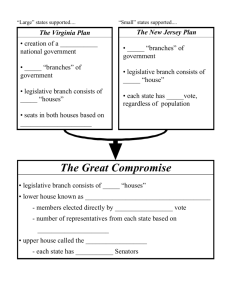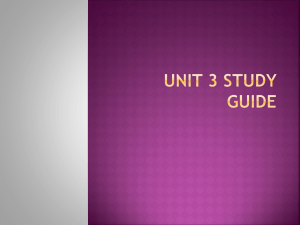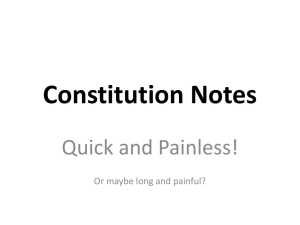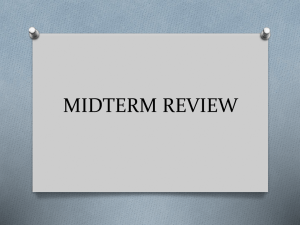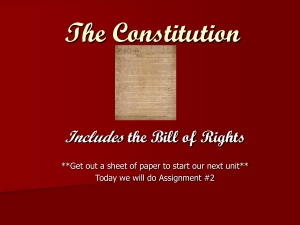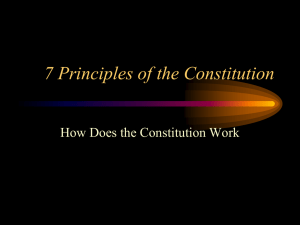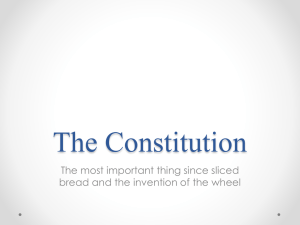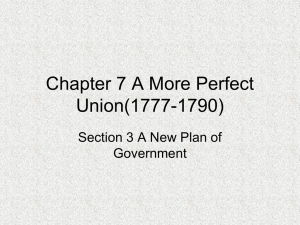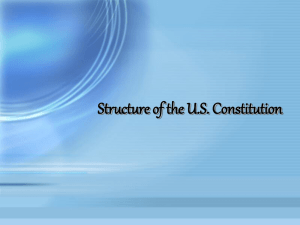We The People - Study Guide (Baker)
advertisement
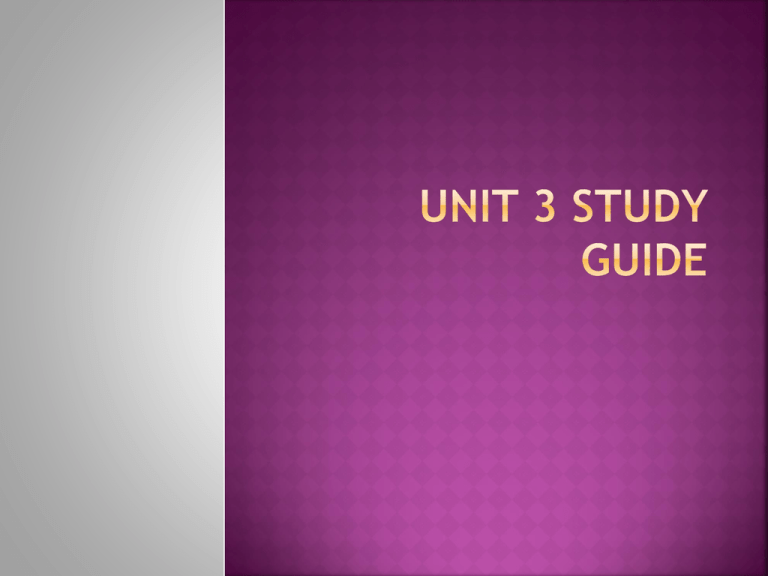
Where did the Constitutional Convention take place? (City, State) Philadelphia, Pennsylvania Every five enslaved persons would count as three free persons What was the name of the Compromise that appeased both the large states and small states and what did it state about representation in government? The Great Compromise (former ally called the Connecticut Plan) What was the date of the beginning of the Constitutional Convention? May 25, 1787 What was the date of the signing of the Constitution? September 17, 1787 List the 3 parts of the Constitution Pre-Amble 7 Articles 27 Amendments Which article of the Constitution describes the powers of the Supreme Court? Article 3 Which article discusses debts and treaties of the states, and establishes the “supremacy clause”? Article 6 List the five basic principles of the Constitution Popular Sovereignty Limited Government Federalism Separation of Powers Checks and Balances What is the only amendment to be ratified using the state convention option? 21st Out of the original 13 states, how many states needed to ratify the Constitution for it to become law? 9 Expressed Powers Implied Powers Delegated Powers Virginia Plan Which compromise addressed how the President would be chosen? Electoral College Compromise Who kept a historical diary of the events taking place at the Constitutional Convention? James Madison James Madison John Jay Alexander Hamilton James Madison proposed the Virginia Plan William Patterson proposed the New Jersey Plan James Madison V (5) Voting VII (7) Necessary and Proper Clause Which clause located in Article IV (4) says states must recognize the public acts, records, and judicial proceedings of every other state? Full Faith and Credit Clause The Great Compromise (Originally the Connecticut Plan) The 3/5 Compromise The Commerce and Slave Compromise The Electoral College Compromise Legislative Branch Which branch of the government is led by the President? Executive Judicial Legislative Judicial Executive New Jersey Plan Connecticut Provided a way to survey the land west of the Appalachian Mountains Established states. how western land could become Virginia Plan—two house legislature both houses based on population. New Jersey Plan—one house legislature based on equal representation. Combined the Virginia Plan and the New Jersey Plan to create our Legislative Branch. Two house legislature (bicameral), one house based on equal representation (Senate) and the other house based on population (The House of Representatives) Slaves did not have right to vote, therefore should not count as population because it would give the Southern States more power in Congress Popular vote of the people is used to vote for Electors. The number of Electors is based on the states population. The Electors use the popular vote to vote for the President, so in reality, the Electors choose the President, not the people directly. Electors have the right to vote against the popular vote if they deem fit. Use to make sure all three branches (legislative, executive and judicial) are restrained so each have balanced power. Legislative branch has the right to make laws Executive branch can veto the laws Legislative branch can override a veto with a 2/3s vote. Judicial branch can rule any law unconstitutional What is Federalism? The division of power between the federal government and the state governments. The Federalists wanted a Constitution that would give the central government more power. The Anti-federalists were concerned that the central government would abuse the power so they wanted a Bill of Rights added to the Constitution. The persuade Americans to ratify the Constitution To state the purpose of the federal government What year did NC ratify the Constitution? 1789 – became the 12th state to ratify 2/3 3/4 V (5) Article II (2) Article VII (7) Article I (1) Article IV (4) Article III (3) Article VI (6)
